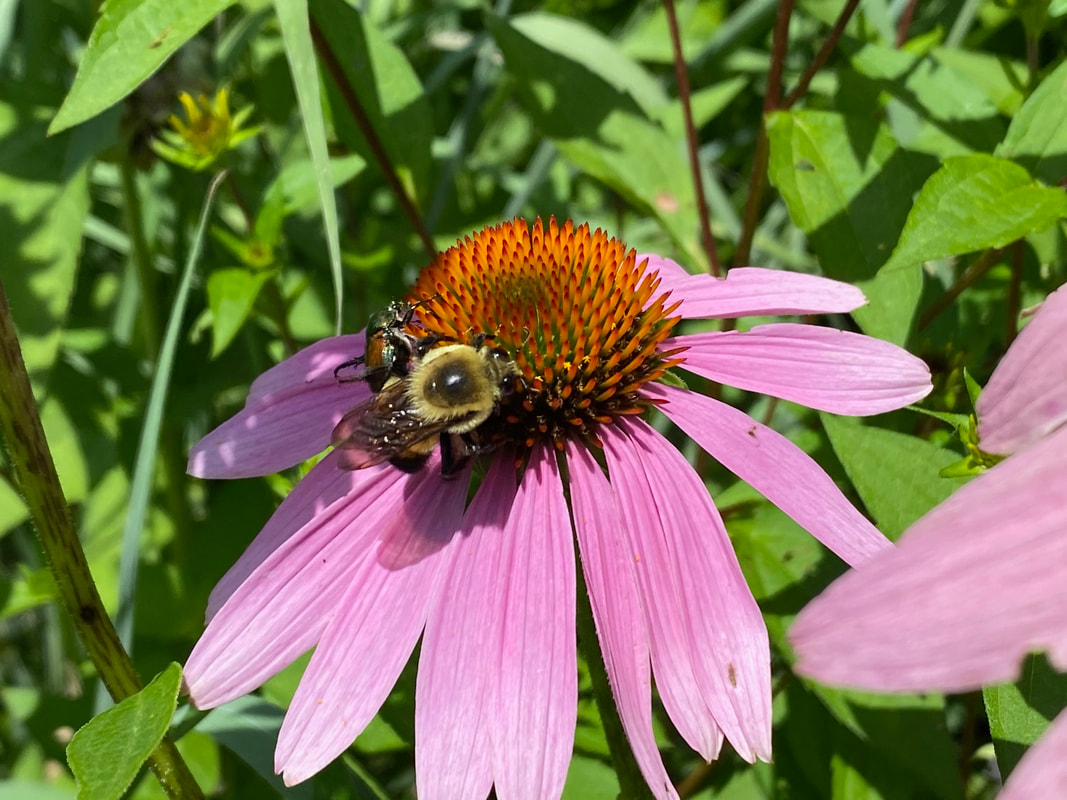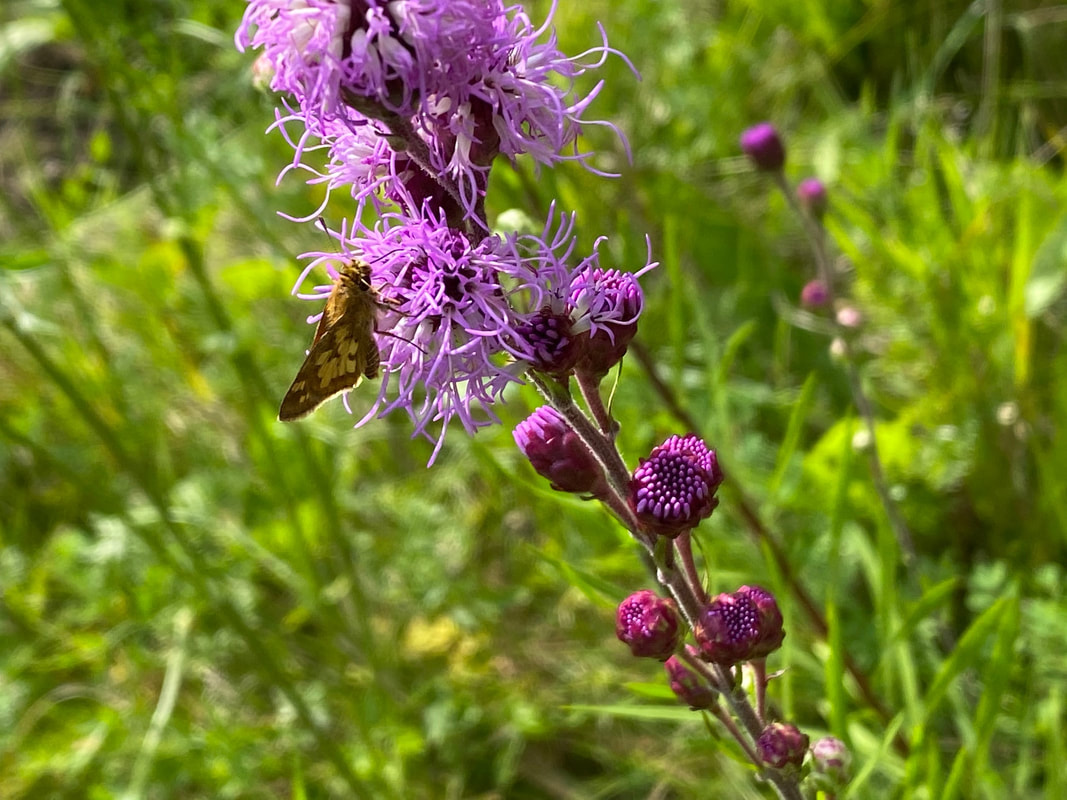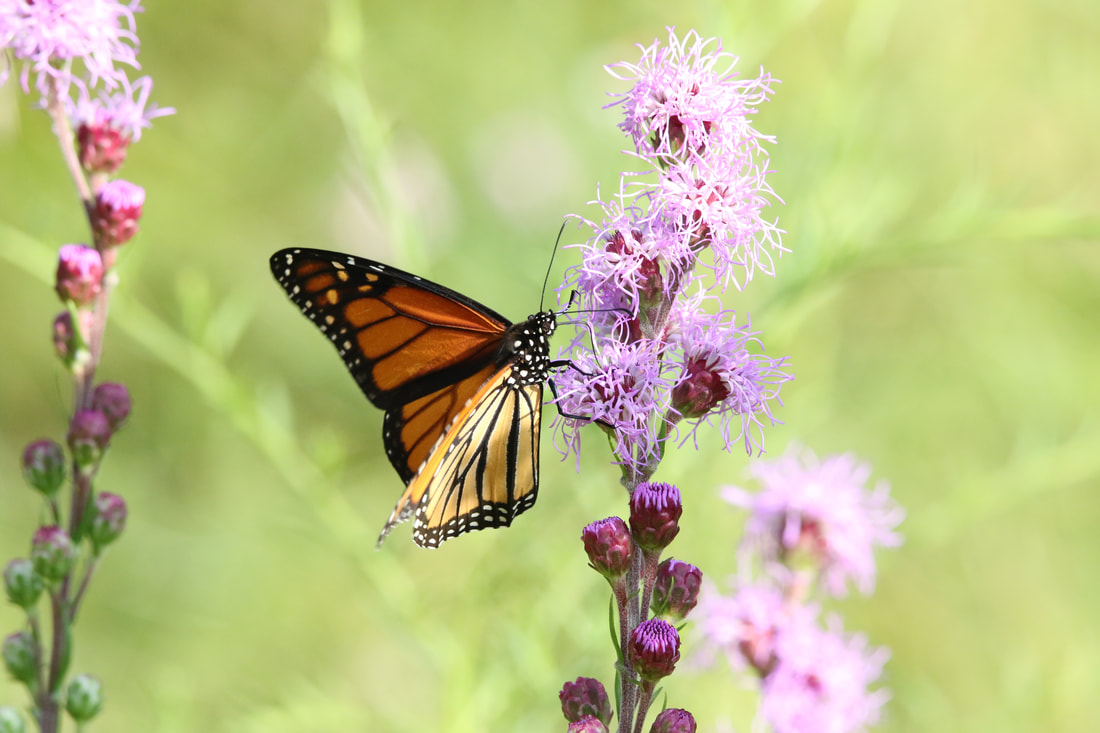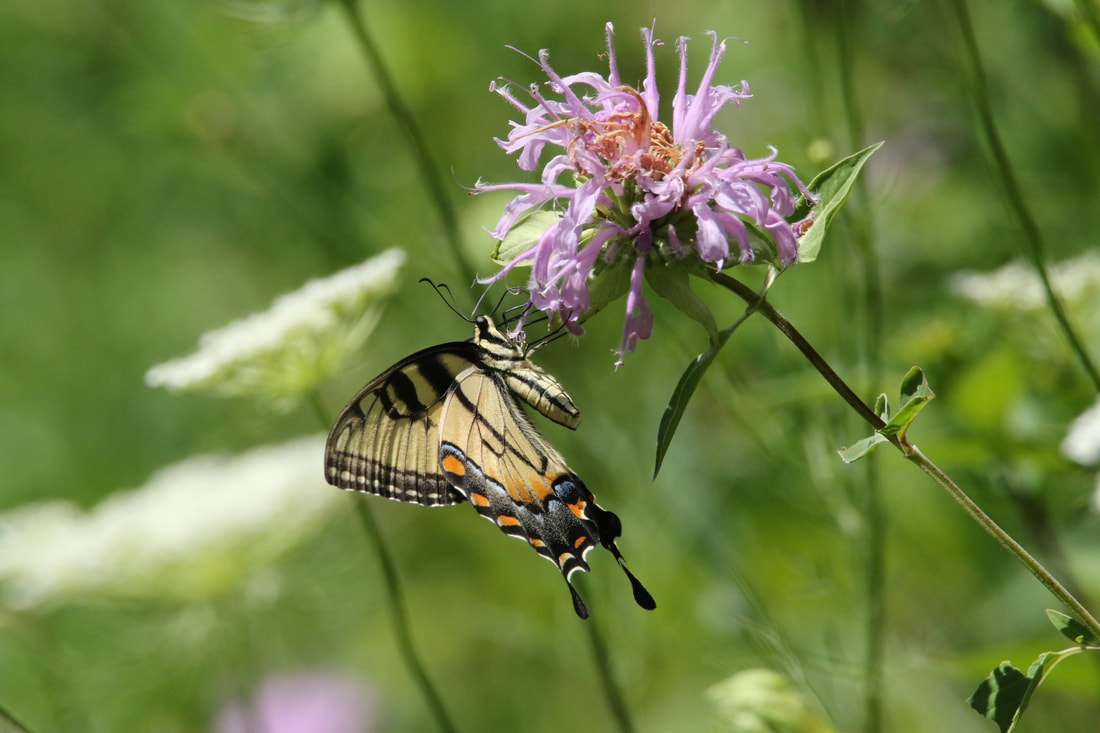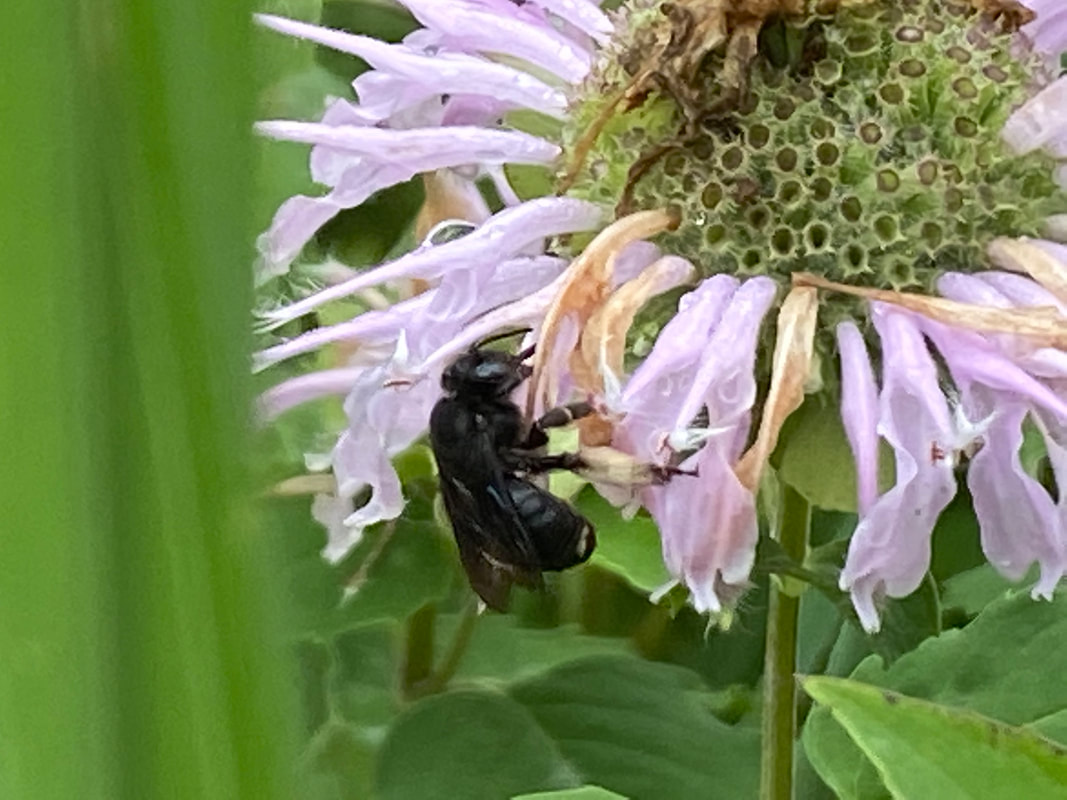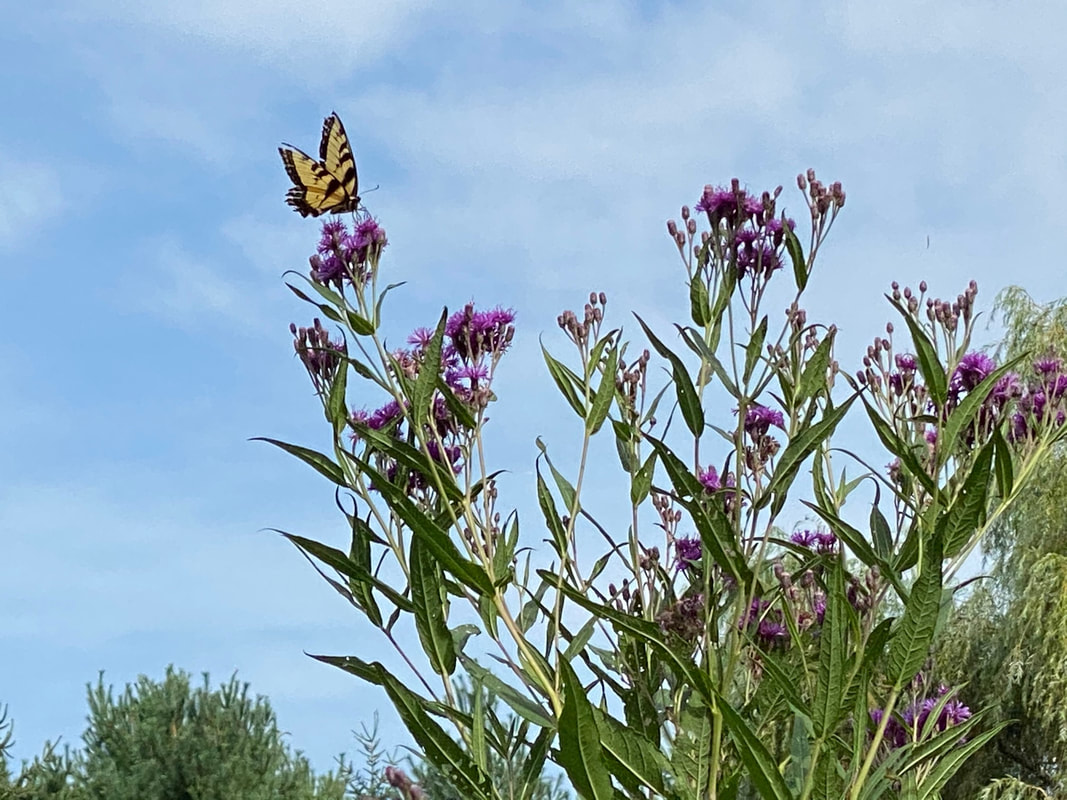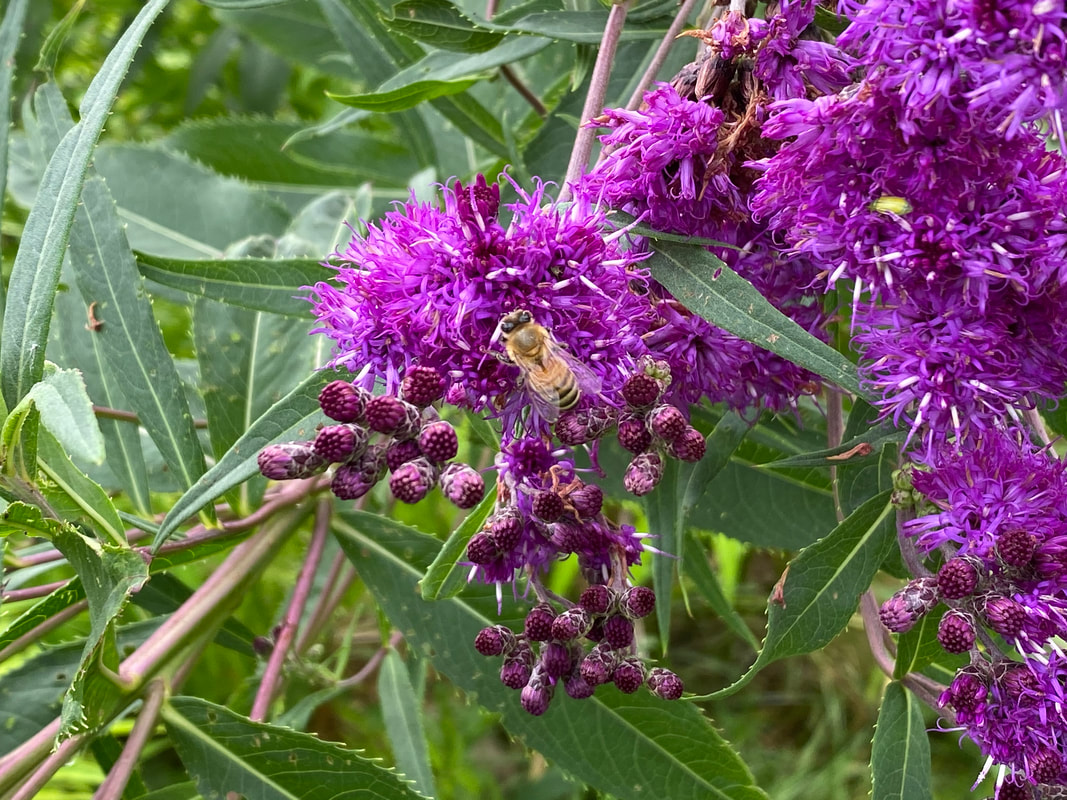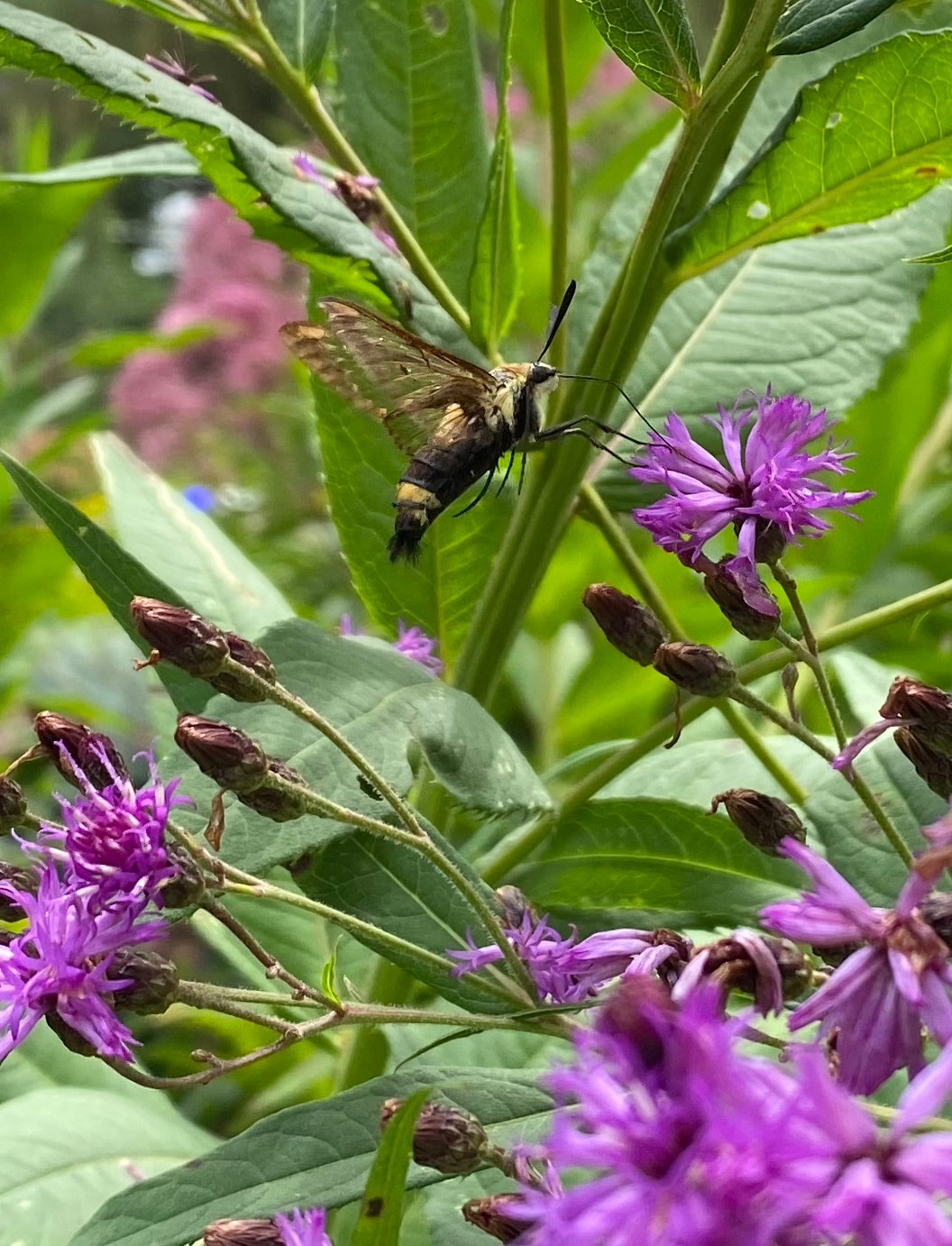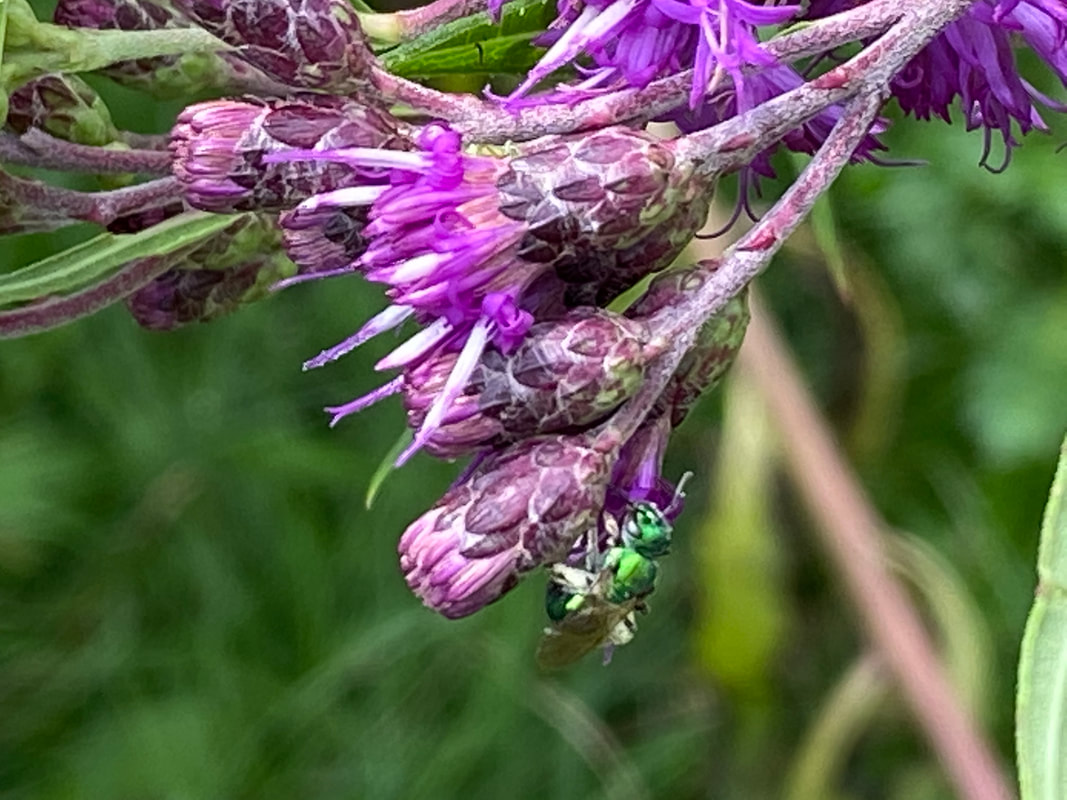|
The 10 Best Perennials for Pollinators by Beth Martin As hard as it is to pull myself away from the bottlebrush buckeye, I am going to do so to talk about perennials. But before I do, I would like to say something else on behalf of the bottlebrush and the other shrubs. Choose a variety of shrubs that will offer flowers through the season: Early spring - red buckeye, autumn splendor buckeye, Fort McNair, serviceberry, chokeberry Late spring/early summer - St. John's Wort 'Ames', bottlebrush buckeye, Kodiak Red honeysuckle Late season - seven sons tree I discussed these in the last blog post. You can read it here. Bolded shrubs are still available at BGC. One thing consistently recommended for the benefit of bees, and honey bees in particular, is mass plantings so the bees do not need to figure out how to best collect pollen by going between different types of plants. In this way, shrubs are really superior in that they are already a mass planting. Bees and other pollinators can flit between buds without changing effective pollination tactics. So as we begin to discuss perennials, we want to keep in mind that planting them in numbered groupings will be most beneficial for your pollinators. A single plant is fine. But for the case of benefiting pollinators, more is better. Aesthetically, to our eye, it looks better also. So now let’s make sure we have hardy show-stopping perennials to add to those shrubs. What could be more obvious as a perennial pollinator than the beloved and reviled milkweed?! Loved for the fact that it is solely keeping the monarch butterfly population alive, but reviled because it sometimes does not know it’s place. I am one of those odd gardeners. Wherever it wants to pop up, it can pop up. I drop a bamboo stake in the ground where I see them crop up to mark the area. Hopefully I see it before I cut it down to size with my supersize mower. Surprised I have a supersized mower? Me too...but I am working to take away its domain. So, common milkweed (Aesclepias syriaca). Reliable? No. Not in the sense that it will come back up where you had planted it previously, but it likely will come up. Why is it important? Because it is the life source of monarchs. Will other milkweeds do? Certainly. But if you have ever raised monarchs, you know there is no other form of milkweed that has the large leaves of the common milkweed. And if you have hungry caterpillars at home, you want common milkweed. So let’s just agree to love it and bring about it’s best tendencies, okay?!? My favorite milkweed is Swamp milkweed (Aesclepias incarnata). I like it best because it generally comes back up right where it was the previous year. You want to be sure you keep weeds at bay, because it does become less reliable with thick grass or creeping charlie or another ground covering weed. Sometimes it’s hard to think of it as a milkweed because it is a classier looking plant than the common. The same is true for butterfly weed (Aesclepias tuberosa). That bright orange is such a showstopper for me. The color of the unopened buds is the color of a spectacular sunset in my eyes. So raise all 12 Wisconsin native milkweeds if you would like, but be sure to go heavy on Common, Swamp and Butterfly weed. To see all 12 types of Wisconsin milkweed, visit https://madisonaudubon.org/s/WisconsinsMilkweeds-printerfriendly.pdf Also, save the seeds if you want more of that particular plant. We can talk about seed saving at a later date. Those are the givens for the monarch population, egg laying through enclosing (emerging butterfly stage). Once a caterpillar has become a butterfly, their nectar needs change and there are several additional plants that are important for the monarch butterfly as well as other native pollinators. And of course, the best possible perennials are our native species which will attract the most pollinators. I tell customers at Burlington Garden Center all the time that I have my top 10 perennials or annuals and then stop myself to ask “Where is this plant on my list?” So here it is, based on my observations from my own garden. By the way, if you have the 2020 BGC t-shirt, you will find many of my favorites on it!
So I went a little beyond 10. I could keep going but these are the plants on which I have observed the most activity. But keep in mind, downy phlox, smooth phlox, stiff coreopsis, goldenrod, prairie dropseed, columbine are also plants that could slide into this list.
Once you have some good backbone trees and shrubs, you can work groupings of three of these into your garden to mesmerize you during the spring, summer and fall. We walk our gardens daily to note any changes we see and to try and notice not just the big spectacular pollinators, but also the tiniest and less appreciated. Do I have non-native perennials in our gardens? Yep, I sure do. I can not pass them up either, but I make sure I have natives throughout as well. Over time, I have found myself appreciating the native selections more and more. Natives are so important to our pollinators, but next time I will tell you about a few of my favorite annuals which are particularly important early and late season to help our insects bulk up for hibernation and migration. Beth Martin works at Burlington Garden Center and is a Master Gardener, Master Composter, and Naturalist.
2 Comments
Deborah Polansky
8/15/2020 01:11:41 pm
Hydrangea paniculata Pink Diamond was hopping with swallowtails and hundreds of small pastel yellow, ivory and blueish white butterflies. Plus many types of bees. The Agastache Black Adder or Blue Profusion is worth spending the money. Hundreds of small butterflies, many bees. Fun chat, Beth!
Reply
Leave a Reply. |
|
|
STORE INFO
5205 Mormon Road Burlington, WI 53105 262.763.2153 |

